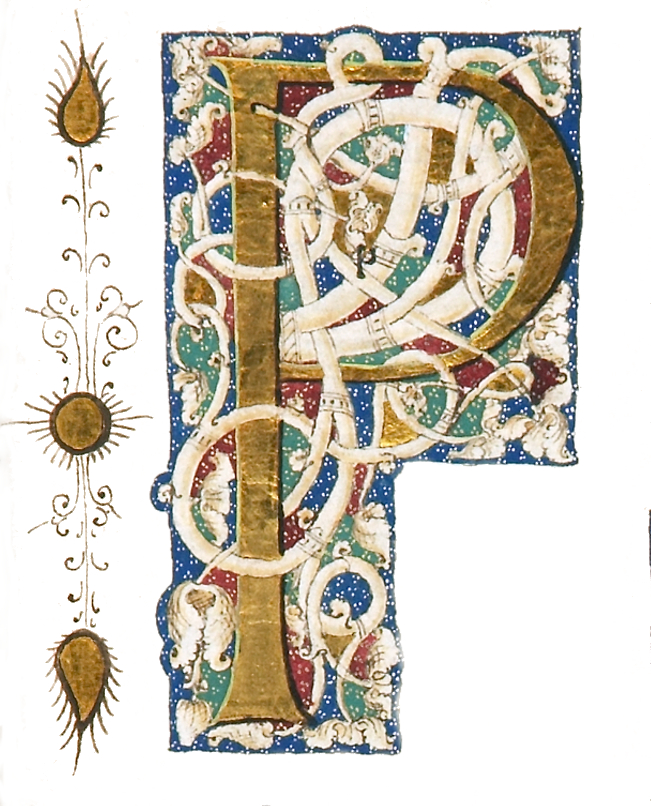first edition
1684 · Firenze [Florence]
by (PARASITES). REDI, FRANCESCO
Firenze [Florence]: Piero Martini, 1684. FIRST EDITION. 265 x 195 mm. (10 1/2 x 7 3/4"). 4 p.l., 240, 251-53 pp. (complete; last 3 pp. misnumbered), followed by plates.
Contemporary flexible vellum, smooth spine with ink lettering and small hand-drawn ornament, EDGES UNTRIMMED. Engraved frontispiece portrait, and 26 ENGRAVED PLATES of parasites, two of these folding. Front flyleaf with gift inscription from the author: "Donato dall Autore a Fulvio Leone Maurizio l'anno 1688." ["Given by the Author to Fulvio Leone Maurizio in the year 1688"]. Garrison-Morton 2448; Waller 11939; USTC 1750070. See Amici, "The history of Italian parasitology," in "Veterinary Parasitology" 98 (2001), pp. 3-30. Vellum with half a dozen small spots, corners slightly damaged, a handful of quires with small, faint, unobtrusive (water?) spot at top corner (well away from the text), the two folding plates with very short tears to a fold, but still A FINE, UNTRIMMED COPY, especially clean and fresh internally, with vast margins, and in its well-preserved unsophisticated original binding.
Complete with the often-lacking portrait and printed on strong laid paper, this is an especially appealing presentation copy of what the Honeyman catalogue calls "the first modern work of parasitology." In "Observations on Living Animals [i.e., Parasites] Found in Living Animals," Redi (1626-98) describes 108 species that derive their nutriment from host organisms. Norman says our author discovered these by dissecting many different types of animals, "including leeches, earthworms, snails, slugs, cephalopods, lobsters, various fishes, and an owl." He demonstrates here that parasitic ascarids found in humans are not spontaneously generated, but that they have reproductive organs and multiply through fertilized eggs. According to Amici, Redi was "a microscopist of great merit," and this talent helped produce the "lucid illustrations" found here. Redi's research went beyond identifying and describing the parasites; as a doctor, he wanted to find ways to treat them. Amici reports that he conducted in vitro trials on earthworms, cat and fish worms, leeches, and even humans, discovering that santonin and copper sulfate were remedies with some degree of efficacy. In addition to his scientific research, Redi served as chief physician and superintendent of the ducal pharmacy at the Medici court in Florence. Perhaps his experience with the politics of the court helped him with another remarkable achievement--avoiding the wrath of the Catholic Church. Amici notes that "he lived and operated at a time when it was dangerous--as was demonstrated by the condemnation to the stake of the philosopher Giordano Bruno, and of the imprisonment of another philosopher Thomas Campanella and the astronomer Galileo Galilei--to express new ideas contrary to theological tradition of the Holy Scripture. Conscious of this, Redi carefully produced a new interpretation based on . . . passages from the Bible." We could not identify the person to whom Redi inscribed this copy, but auction records indicate that presentation copies of his books are seldom encountered. This is not a rare book, but one would have to wait a very long time to find a better copy than the present one.. (Inventory #: ST20184)
Contemporary flexible vellum, smooth spine with ink lettering and small hand-drawn ornament, EDGES UNTRIMMED. Engraved frontispiece portrait, and 26 ENGRAVED PLATES of parasites, two of these folding. Front flyleaf with gift inscription from the author: "Donato dall Autore a Fulvio Leone Maurizio l'anno 1688." ["Given by the Author to Fulvio Leone Maurizio in the year 1688"]. Garrison-Morton 2448; Waller 11939; USTC 1750070. See Amici, "The history of Italian parasitology," in "Veterinary Parasitology" 98 (2001), pp. 3-30. Vellum with half a dozen small spots, corners slightly damaged, a handful of quires with small, faint, unobtrusive (water?) spot at top corner (well away from the text), the two folding plates with very short tears to a fold, but still A FINE, UNTRIMMED COPY, especially clean and fresh internally, with vast margins, and in its well-preserved unsophisticated original binding.
Complete with the often-lacking portrait and printed on strong laid paper, this is an especially appealing presentation copy of what the Honeyman catalogue calls "the first modern work of parasitology." In "Observations on Living Animals [i.e., Parasites] Found in Living Animals," Redi (1626-98) describes 108 species that derive their nutriment from host organisms. Norman says our author discovered these by dissecting many different types of animals, "including leeches, earthworms, snails, slugs, cephalopods, lobsters, various fishes, and an owl." He demonstrates here that parasitic ascarids found in humans are not spontaneously generated, but that they have reproductive organs and multiply through fertilized eggs. According to Amici, Redi was "a microscopist of great merit," and this talent helped produce the "lucid illustrations" found here. Redi's research went beyond identifying and describing the parasites; as a doctor, he wanted to find ways to treat them. Amici reports that he conducted in vitro trials on earthworms, cat and fish worms, leeches, and even humans, discovering that santonin and copper sulfate were remedies with some degree of efficacy. In addition to his scientific research, Redi served as chief physician and superintendent of the ducal pharmacy at the Medici court in Florence. Perhaps his experience with the politics of the court helped him with another remarkable achievement--avoiding the wrath of the Catholic Church. Amici notes that "he lived and operated at a time when it was dangerous--as was demonstrated by the condemnation to the stake of the philosopher Giordano Bruno, and of the imprisonment of another philosopher Thomas Campanella and the astronomer Galileo Galilei--to express new ideas contrary to theological tradition of the Holy Scripture. Conscious of this, Redi carefully produced a new interpretation based on . . . passages from the Bible." We could not identify the person to whom Redi inscribed this copy, but auction records indicate that presentation copies of his books are seldom encountered. This is not a rare book, but one would have to wait a very long time to find a better copy than the present one.. (Inventory #: ST20184)














